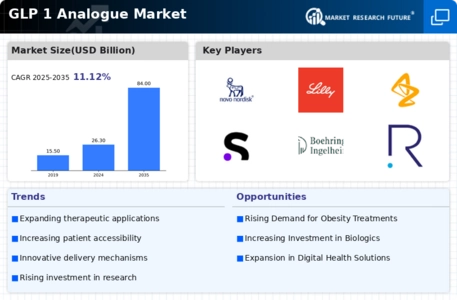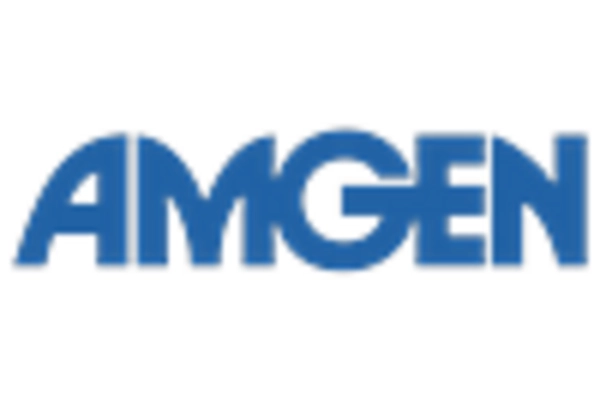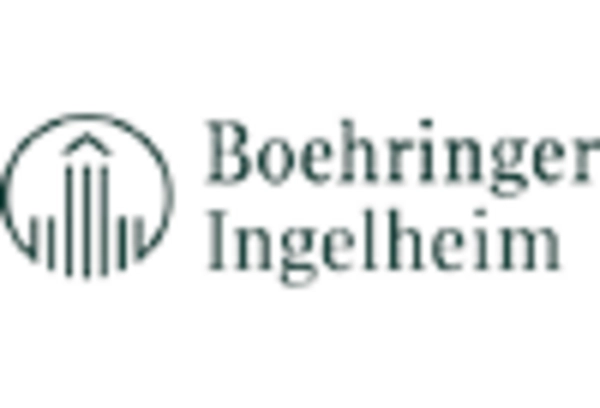Growing Prevalence of Diabetes
The rising incidence of diabetes, particularly type 2 diabetes, is a primary driver for the GLP 1 Analogue Market. According to recent estimates, the number of adults diagnosed with diabetes has surged, with projections indicating that by 2030, approximately 643 million individuals will be affected. This alarming trend necessitates effective management solutions, thereby propelling the demand for GLP 1 analogues, which have demonstrated efficacy in glycemic control and weight management. As healthcare systems grapple with the increasing burden of diabetes, the GLP 1 Analogue Market is poised for substantial growth, as these medications offer a dual benefit of improving metabolic health while reducing cardiovascular risks.
Regulatory Support and Approvals
Regulatory support and timely approvals for GLP 1 analogues are crucial factors driving the GLP 1 Analogue Market. Regulatory agencies have increasingly recognized the therapeutic benefits of these medications, leading to expedited review processes and approvals for new formulations. This supportive regulatory environment encourages pharmaceutical companies to invest in research and development, fostering innovation within the market. As new products enter the market, competition is expected to intensify, potentially leading to more affordable options for patients. The proactive stance of regulatory bodies is likely to enhance the accessibility and availability of GLP 1 analogues, thereby propelling the growth of the GLP 1 Analogue Market.
Advancements in Clinical Research
Ongoing advancements in clinical research are significantly influencing the GLP 1 Analogue Market. Recent studies have unveiled new therapeutic potentials of GLP 1 analogues beyond diabetes management, including their role in obesity treatment and cardiovascular health. The expanding body of evidence supporting the safety and efficacy of these drugs is likely to enhance their acceptance among healthcare providers and patients alike. Furthermore, the increasing number of clinical trials exploring novel formulations and combinations with other therapies may lead to innovative treatment options, thereby expanding the market landscape. This research-driven approach is expected to bolster the GLP 1 Analogue Market, as new findings continue to emerge.
Rising Awareness of Obesity Management
The growing awareness surrounding obesity and its associated health risks is a significant driver for the GLP 1 Analogue Market. With obesity rates climbing steadily, healthcare professionals and patients are increasingly recognizing the importance of effective weight management strategies. GLP 1 analogues have gained attention for their ability to promote weight loss in addition to managing blood glucose levels. Market data indicates that the obesity treatment segment is projected to witness a compound annual growth rate of over 10% in the coming years. This heightened focus on obesity management is likely to catalyze the adoption of GLP 1 analogues, further solidifying their role in the GLP 1 Analogue Market.
Integration of Digital Health Solutions
The integration of digital health solutions into diabetes management is emerging as a pivotal driver for the GLP 1 Analogue Market. The proliferation of mobile health applications and telemedicine platforms facilitates better patient engagement and adherence to treatment regimens. These digital tools can provide real-time data on patient health metrics, enabling healthcare providers to tailor treatment plans effectively. As patients become more empowered in managing their health, the demand for GLP 1 analogues is likely to increase, as these medications are often part of comprehensive management strategies. The synergy between digital health and pharmacotherapy is expected to enhance the overall effectiveness of diabetes care, thereby benefiting the GLP 1 Analogue Market.


















Leave a Comment